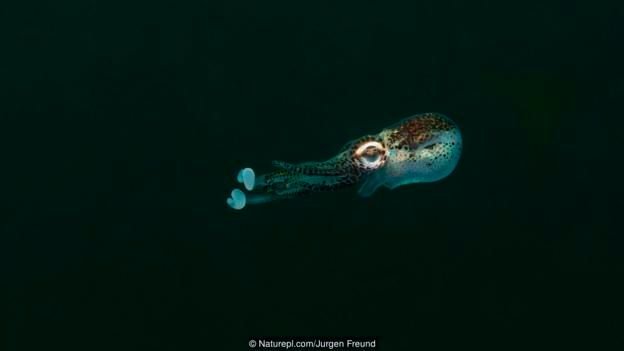
Bioluminescence, the emission of visible light by an organism as the result of a natural chemical reaction, is common among marine life such as fishes, squid and molluscs. In the deep sea most species are bioluminescent, where it is the main source of light.
In shallower waters, most bioluminescent fish display their lights at night.
“Flashlight fishes have a specialized pouch under their eye that they can rotate to expose the light emitted from these bacteria, and they use this glow at night to hunt for food and communicate,” says Dr Matt Davis.
Ponyfish emit light from the bioluminescent bacteria housed in a pouch using transparent muscular shutters, to communicate, he explains.
Camouflage, defence and predation are among the variety of reasons fishes are thought to emit light.
For example, bobtail squid have an ingenious way of using lights. These nocturnal animals have a mutually beneficial relationship with luminescing bacteria that live in a mantel cavity on its underside. At night the squid control the intensity of this light to match the moonlight, and can reduce their silhouette to camouflage themselves from predators.
Hi! I am a robot. I just upvoted you! I found similar content that readers might be interested in:
http://www.bbc.com/earth/story/20170818-five-amazing-things-that-happen-in-the-ocean-at-night